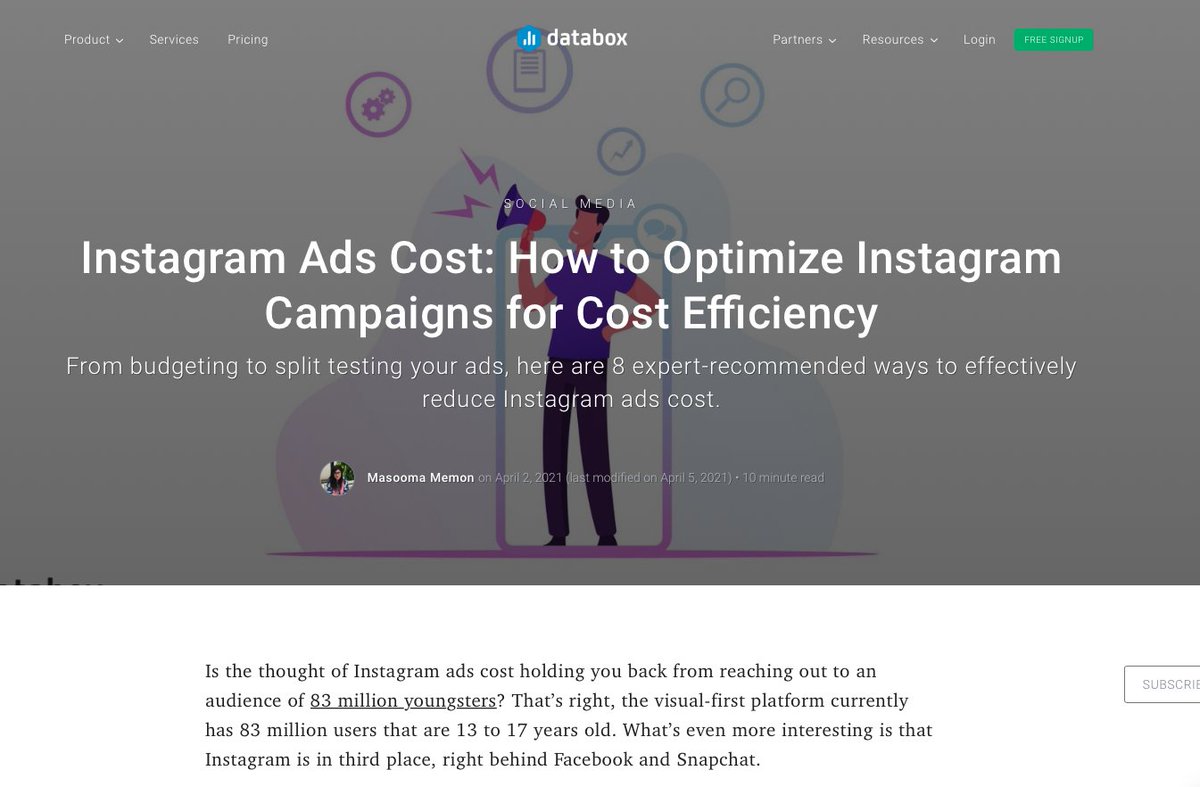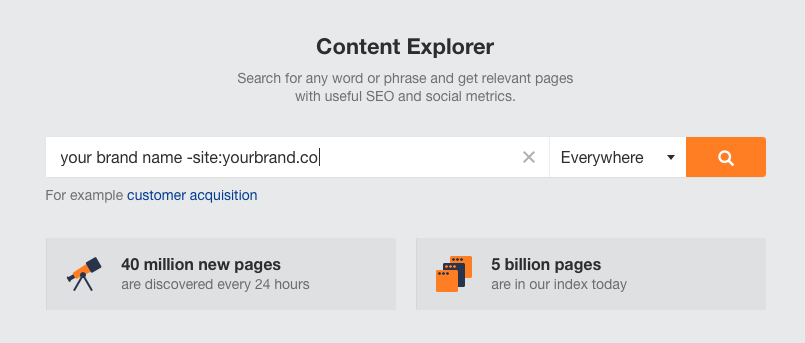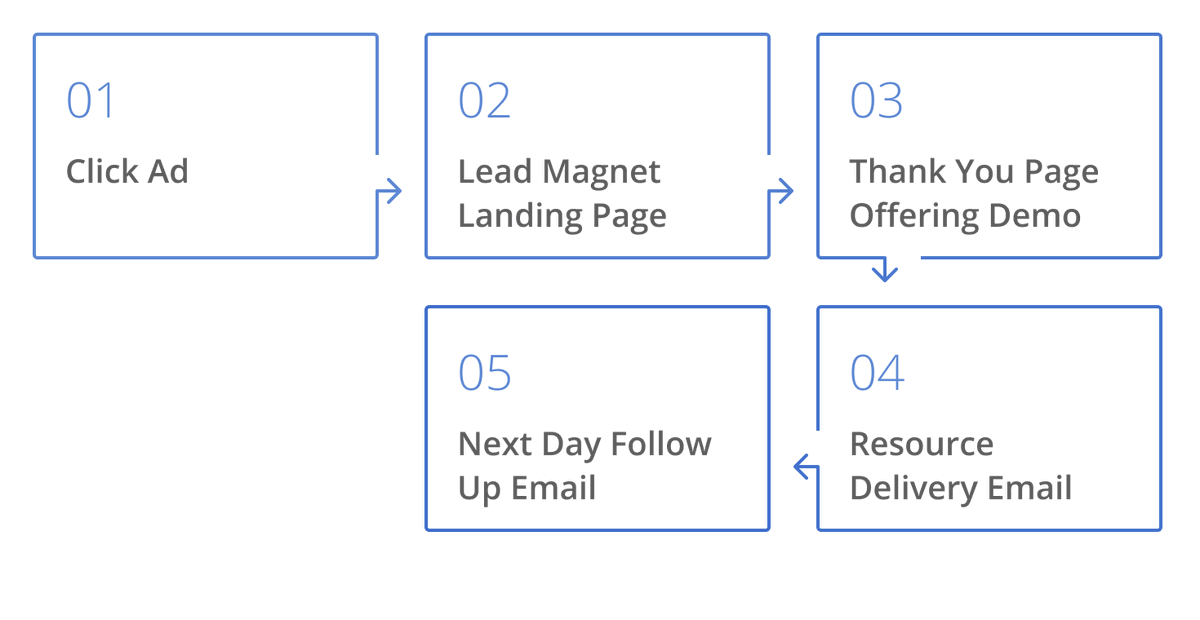Most B2B SaaS companies want to create a demand generation flywheel.
Here are the 20% strategies that will yield 80% of the results:
Here are the 20% strategies that will yield 80% of the results:
1. Start with positioning.
It impacts literally everything you do.
Profitable demand gen starts with strong positioning.
If you& #39;re not positioned correctly you& #39;ll generate bad demand.
It impacts literally everything you do.
Profitable demand gen starts with strong positioning.
If you& #39;re not positioned correctly you& #39;ll generate bad demand.
Quick positioning primer.
Answer these questions:
– Who do you help?
– How do you differ from your competition?
– What problems do you solve?
– How does your product work?
Answer these questions:
– Who do you help?
– How do you differ from your competition?
– What problems do you solve?
– How does your product work?
Positioning can feel abstract and confusing. We created a free tool to help you do it better.
Grab it here: https://www.poweredbysearch.com/blog/b2b-saas-positioning-canvas/">https://www.poweredbysearch.com/blog/b2b-...
Grab it here: https://www.poweredbysearch.com/blog/b2b-saas-positioning-canvas/">https://www.poweredbysearch.com/blog/b2b-...
2. Structure your website around demand generation goals
SaaS websites evolve over time. Founders add pages. Early hires add some. Later hires add different pages.
There& #39;s no coherent journey for a potential customer to go through.
Result is leaky funnels and lost prospects.
SaaS websites evolve over time. Founders add pages. Early hires add some. Later hires add different pages.
There& #39;s no coherent journey for a potential customer to go through.
Result is leaky funnels and lost prospects.
Start by making sure the structure of these pages is right:
a) Homepage
b) Products and features
c) Blog
a) Homepage
b) Products and features
c) Blog
a) Homepage
Make use of a headline that speaks directly to your audience and tells them that the product is clearly for them.
Align this to value props and positioning from above. https://twitter.com/iammarcthomas/status/1369270495108100098">https://twitter.com/iammarcth...
Make use of a headline that speaks directly to your audience and tells them that the product is clearly for them.
Align this to value props and positioning from above. https://twitter.com/iammarcthomas/status/1369270495108100098">https://twitter.com/iammarcth...
Follow that up with a strong benefit statement.
Best way to do that is to say exactly how customers are going to feel after using your product. https://twitter.com/iammarcthomas/status/1369270497339441155">https://twitter.com/iammarcth...
Best way to do that is to say exactly how customers are going to feel after using your product. https://twitter.com/iammarcthomas/status/1369270497339441155">https://twitter.com/iammarcth...
b) Products and features
Lots of cos forget that product and features pages aren& #39;t just lists of all their features.
They& #39;re an opportunity to tell a story about how a user& #39;s pain will be solved by the features in your product.
Go for the & #39;deep dedicated page& #39; https://abs.twimg.com/emoji/v2/... draggable="false" alt="👇" title="Rückhand Zeigefinger nach unten" aria-label="Emoji: Rückhand Zeigefinger nach unten">
https://abs.twimg.com/emoji/v2/... draggable="false" alt="👇" title="Rückhand Zeigefinger nach unten" aria-label="Emoji: Rückhand Zeigefinger nach unten">
Lots of cos forget that product and features pages aren& #39;t just lists of all their features.
They& #39;re an opportunity to tell a story about how a user& #39;s pain will be solved by the features in your product.
Go for the & #39;deep dedicated page& #39;
Quickest win here is to answer these questions for a visitor before they& #39;ve even scrolled:
– Does the product match what the visitors are searching for?
– Can it solve their problems?
– What& #39;s the ROI?
– How can they take the next step?
– Does the product match what the visitors are searching for?
– Can it solve their problems?
– What& #39;s the ROI?
– How can they take the next step?
BTW – If you& #39;re enjoying this, you& #39;re going to love our blog post on this topic: https://www.poweredbysearch.com/blog/saas-demand-generation/">https://www.poweredbysearch.com/blog/saas...
c) Blog
Crazy: a lot of companies just plonk content onto their blog completely forgetting that it& #39;s one of the highest frequency touchpoint for potential customers.
OPTIMIZE YOUR BLOG FOR CONVERSION!
Crazy: a lot of companies just plonk content onto their blog completely forgetting that it& #39;s one of the highest frequency touchpoint for potential customers.
OPTIMIZE YOUR BLOG FOR CONVERSION!
Firstly, align your blog posts to customer pain points.
Think: how does this post help a visitor become a customer?
Think: how does this post help a visitor become a customer?
Who does this well?
An obvious example is @ahrefs.
Their target customer is anyone with a website who wants to do better in search.
So they write articles aligned to getting more traffic from search.
They pitch their product where it makes sense.
Example:
An obvious example is @ahrefs.
Their target customer is anyone with a website who wants to do better in search.
So they write articles aligned to getting more traffic from search.
They pitch their product where it makes sense.
Example:
A lesser talked about example is @databoxHQ.
Their product helps people who want to track data from lots of sources build live dashboards.
So they create blog posts about the metrics they can hep you track, targeting broad interest but aligning to pain points.
Their product helps people who want to track data from lots of sources build live dashboards.
So they create blog posts about the metrics they can hep you track, targeting broad interest but aligning to pain points.
Avoid waiting until the end of the article to include a call to action.
People *rarely* read all the way to the bottom of a blog post.
Include CTAs in the body of your post. Here& #39;s an example from the @poweredbysearch blog:
People *rarely* read all the way to the bottom of a blog post.
Include CTAs in the body of your post. Here& #39;s an example from the @poweredbysearch blog:
3. SEO for demand generation
Important for demand gen:
a) Technical SEO – Don& #39;t leak visits because your site isn& #39;t performant
b) Content marketing – Have the right things on your site
c) Outreach – Building authority and relationships
Important for demand gen:
a) Technical SEO – Don& #39;t leak visits because your site isn& #39;t performant
b) Content marketing – Have the right things on your site
c) Outreach – Building authority and relationships
a) Technical SEO
Increase page level topical relevance so that you& #39;re fulfilling searcher intent
Decrease website and crawl errors – I use Google Search Console and @ahrefs site audit tool
Technical SEO needs a lot of attention though. Invest wisely!
Increase page level topical relevance so that you& #39;re fulfilling searcher intent
Decrease website and crawl errors – I use Google Search Console and @ahrefs site audit tool
Technical SEO needs a lot of attention though. Invest wisely!
Decreasing response time to deploy content changes.
This might mean empowering content teams to do some of the work themselves.
It may mean restructuring your market team slightly.
This might mean empowering content teams to do some of the work themselves.
It may mean restructuring your market team slightly.
Increase content and context of web content
I like tools like @marketmuse or @fraseHQ for this one.
Sites that cover topics well will do better in search *and* with visitors.
I like tools like @marketmuse or @fraseHQ for this one.
Sites that cover topics well will do better in search *and* with visitors.
b) Content marketing
Start by consolidating existing pages:
- increase maintainability
- avoids keyword cannibalization
Start by consolidating existing pages:
- increase maintainability
- avoids keyword cannibalization
Then create fewer pages:
Don& #39;t just fall into the trap of creating a page for every new feature. Every new blog idea.
See whether you can combine several ideas into a strong narrative thread aligned to your user& #39;s pain point.
(There& #39;s an echo in here!)
Don& #39;t just fall into the trap of creating a page for every new feature. Every new blog idea.
See whether you can combine several ideas into a strong narrative thread aligned to your user& #39;s pain point.
(There& #39;s an echo in here!)
Consider content refreshes regularly
B2B SaaS companies change fast. You& #39;ve likely got a lot of outdated content.
Don& #39;t waste your visitor& #39;s attention span with stuff that isn& #39;t current.
Set team targets to ensure refreshes happen regularly
B2B SaaS companies change fast. You& #39;ve likely got a lot of outdated content.
Don& #39;t waste your visitor& #39;s attention span with stuff that isn& #39;t current.
Set team targets to ensure refreshes happen regularly
c) SEO outreach
Build relationships with relevant publications in your industry.
When you publish, share the link with them. Get their insights in the piece.
Ask them to share with their networks.
Build relationships with relevant publications in your industry.
When you publish, share the link with them. Get their insights in the piece.
Ask them to share with their networks.
My best SEO outreach results come from directly messaging influencers who I have relationships with on social media.
I live in Twitter DMs and private communities.
I live in Twitter DMs and private communities.
Most important: create content worth sharing.
Then build a distribution system to improve the chances of your ideal customers seeing links to your content.
Share many times! You will not annoy your networks.
Then build a distribution system to improve the chances of your ideal customers seeing links to your content.
Share many times! You will not annoy your networks.
One easy win for SEO outreach is reclaiming unlinked brand mentions.
Here& #39;s how you find those with @ahrefs Content Explorer ( @timsoulo should pay me commission https://abs.twimg.com/emoji/v2/... draggable="false" alt="😂" title="Gesicht mit Freudentränen" aria-label="Emoji: Gesicht mit Freudentränen">):
https://abs.twimg.com/emoji/v2/... draggable="false" alt="😂" title="Gesicht mit Freudentränen" aria-label="Emoji: Gesicht mit Freudentränen">):
Here& #39;s how you find those with @ahrefs Content Explorer ( @timsoulo should pay me commission
How it works in practice:
Effective PPC strategy starts with finding customer-channel fit.
i.e. Creative matches user behaviour and intent on the channel you& #39;re running ads.
Effective PPC strategy starts with finding customer-channel fit.
i.e. Creative matches user behaviour and intent on the channel you& #39;re running ads.
Most people who say & #39;ads aren& #39;t working for us& #39; are doing one of these things wrong:
– Not testing enough
– Not mapping workflow to buyer journey
– No remarketing set up and fail to use a pixel delay
– Not revamping their ad creative
– Not testing enough
– Not mapping workflow to buyer journey
– No remarketing set up and fail to use a pixel delay
– Not revamping their ad creative
We& #39;ve run ads for dozens of B2B SaaS companies.
What are the most effective?
In order:
a) LinkedIn
b) Facebook
c) Google Ads.
What are the most effective?
In order:
a) LinkedIn
b) Facebook
c) Google Ads.
Running B2B SaaS Linkedin Ads:
Allocate ample budget for LinkedIn ads. You’ll generate fewer yet higher quality leads
Provide LinkedIn with broad job titles of your ideal prospects
Allocate ample budget for LinkedIn ads. You’ll generate fewer yet higher quality leads
Provide LinkedIn with broad job titles of your ideal prospects
Align ad creative with user behaviour.
Lead magnet downloads > trial or demo signups.
More on lead magnets and Demand Gen: https://twitter.com/iammarcthomas/status/1369270499721834500">https://twitter.com/iammarcth...
Lead magnet downloads > trial or demo signups.
More on lead magnets and Demand Gen: https://twitter.com/iammarcthomas/status/1369270499721834500">https://twitter.com/iammarcth...
Running B2B SaaS Facebook Ads:
Specificity matters. 2 main audiences:
Retargeting
Lookalike audiences based on existing high LTV customers
Specificity matters. 2 main audiences:
Retargeting
Lookalike audiences based on existing high LTV customers
Controversial: avoid creating custom audiences based on relevant interest for FB/IG ads
If you do, you& #39;ll find you reach only a small percentage of the right-fit customers
Once again: this is about aligning user intent to your offer. https://twitter.com/iammarcthomas/status/1376484541901209602">https://twitter.com/iammarcth...
If you do, you& #39;ll find you reach only a small percentage of the right-fit customers
Once again: this is about aligning user intent to your offer. https://twitter.com/iammarcthomas/status/1376484541901209602">https://twitter.com/iammarcth...
Running B2B SaaS Google Ads:
5 kinds of campaign to consider:
1. High purchase intent terms
2. Branded search e.g. & #39;your name& #39; + reviews
3. Brand vs. competitor intent
4. Google display network with managed placements
5. ABM lists paired with keyword targeting
5 kinds of campaign to consider:
1. High purchase intent terms
2. Branded search e.g. & #39;your name& #39; + reviews
3. Brand vs. competitor intent
4. Google display network with managed placements
5. ABM lists paired with keyword targeting
What about remarketing?
Don& #39;t assume everyone browses in the same way.
Usually people need to see different messages for their role, intent, industry and risk profile.
Don& #39;t assume everyone browses in the same way.
Usually people need to see different messages for their role, intent, industry and risk profile.
Use the boomerang method:
1. Segment your audience based on the actions and pages they browsed on your website
2. Amplify your ads through omnichannel remarketing
1. Segment your audience based on the actions and pages they browsed on your website
2. Amplify your ads through omnichannel remarketing
Check campaigns for obvious errors within the first day or week.
But avoid changing course too soon.
Keep steady for a month and then re-evaluate.
But anchor on key metrics to reassure yourself in that time...
But avoid changing course too soon.
Keep steady for a month and then re-evaluate.
But anchor on key metrics to reassure yourself in that time...
Calculate your total ad budget. That formula is:
Total Ad Budget = Target # of Closed Deals per Month x Target CAC
Don& #39;t exceed that – or at least not consistently!
Total Ad Budget = Target # of Closed Deals per Month x Target CAC
Don& #39;t exceed that – or at least not consistently!
Calculate the total number of clicks you need to reach your acquisition goal:
Clicks Needed = Goals per Month Needed / Visitor to Goal Conversion Rate
Clicks Needed = Goals per Month Needed / Visitor to Goal Conversion Rate
Determine a target cost per click based on average customer lifetime value and the number of closed deals that you’d like to achieve per month.
Target CPC = Total Ad Budget / Target Clicks per Month
Target CPC = Total Ad Budget / Target Clicks per Month
There& #39;s a huge amount of work that goes into creating a demand gen flywheel.
You need to create so many assets.
But don& #39;t eat the elephant at once. Take it slow.
Build a system over time.
Here& #39;s how I think about systematic growth: https://twitter.com/iammarcthomas/status/1347517505254928385">https://twitter.com/iammarcth...
You need to create so many assets.
But don& #39;t eat the elephant at once. Take it slow.
Build a system over time.
Here& #39;s how I think about systematic growth: https://twitter.com/iammarcthomas/status/1347517505254928385">https://twitter.com/iammarcth...
And again, if you want to take a deeper dive into any of the ideas in this thread, we have this genuinely brilliant post by @devbasu: https://www.poweredbysearch.com/blog/saas-demand-generation/">https://www.poweredbysearch.com/blog/saas...
Did you enjoy this thread? Follow me.
I tweet actionable tips for B2B SaaS marketing all the time!
I tweet actionable tips for B2B SaaS marketing all the time!
BTW – Shout out to @typefullyapp for making it easy for me to write these threads. Thank you @frankdilo and @linuz90  https://abs.twimg.com/emoji/v2/... draggable="false" alt="✨" title="Funken" aria-label="Emoji: Funken">
https://abs.twimg.com/emoji/v2/... draggable="false" alt="✨" title="Funken" aria-label="Emoji: Funken">

 Read on Twitter
Read on Twitter
 " title="b) Products and featuresLots of cos forget that product and features pages aren& #39;t just lists of all their features.They& #39;re an opportunity to tell a story about how a user& #39;s pain will be solved by the features in your product. Go for the & #39;deep dedicated page& #39; https://abs.twimg.com/emoji/v2/... draggable="false" alt="👇" title="Rückhand Zeigefinger nach unten" aria-label="Emoji: Rückhand Zeigefinger nach unten">" class="img-responsive" style="max-width:100%;"/>
" title="b) Products and featuresLots of cos forget that product and features pages aren& #39;t just lists of all their features.They& #39;re an opportunity to tell a story about how a user& #39;s pain will be solved by the features in your product. Go for the & #39;deep dedicated page& #39; https://abs.twimg.com/emoji/v2/... draggable="false" alt="👇" title="Rückhand Zeigefinger nach unten" aria-label="Emoji: Rückhand Zeigefinger nach unten">" class="img-responsive" style="max-width:100%;"/>



 ):" title="One easy win for SEO outreach is reclaiming unlinked brand mentions. Here& #39;s how you find those with @ahrefs Content Explorer ( @timsoulo should pay me commission https://abs.twimg.com/emoji/v2/... draggable="false" alt="😂" title="Gesicht mit Freudentränen" aria-label="Emoji: Gesicht mit Freudentränen">):" class="img-responsive" style="max-width:100%;"/>
):" title="One easy win for SEO outreach is reclaiming unlinked brand mentions. Here& #39;s how you find those with @ahrefs Content Explorer ( @timsoulo should pay me commission https://abs.twimg.com/emoji/v2/... draggable="false" alt="😂" title="Gesicht mit Freudentränen" aria-label="Emoji: Gesicht mit Freudentränen">):" class="img-responsive" style="max-width:100%;"/>



